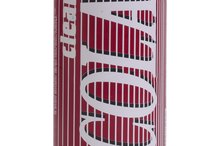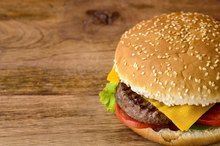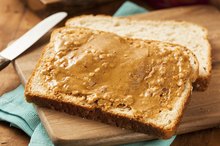Does Alcohol Raise Triglycerides?
Triglycerides are simply excess calories stored in the body to provide energy for cell functioning. Elevated triglyceride levels greater than 150 mg/dL can contribute to the hardening of the artery walls, which in turn can increase your risk for heart disease and stroke.
While high triglycerides are often an indication of obesity or an unmanaged health condition like diabetes or even kidney disease, alcohol consumption can also play a role in raising triglyceride levels.
Alcohol and Triglycerides
Excess drinking can raise triglycerides in addition to raising your blood pressure and providing you with extra calories. You don't need to be a big drinker to see its effects, according to the American Heart Association, as even small amounts of alcohol can cause large changes in your triglyceride levels 13.
How Alcohol Works in the Body
Mayo Clinic Triglyceride Diet
Learn More
Animal studies suggest alcohol use can lead to a fatty liver, a condition that is often a precursor to hepatitis and/or cirrhosis of the liver.
According to the National Institute on Alcohol Abuse and Alcoholism, or NIAAA, alcohol intake reduces the liver's ability to oxidize compounds correctly, which in turn can lead to an increased process by which free fatty acids are transformed into triglycerides.
Of the eight million people in the U.S. who suffer from alcoholism and who have a fatty liver, the NIAAA predicts that at least one-fifth will develop hepatitis or cirrhosis if they do not stop drinking.
Recommended Intake
If you drink alcoholic beverages and have high triglycerides, alcohol reduction can go along way toward bringing these levels back to normal. For best results, the Cleveland Clinic recommends limiting your intake to just 5 oz. per day or to cut it out of your diet completely.
Triglyceride Management
Cheese Diet to Lower Triglycerides
Learn More
While reducing or eliminating alcohol can play a major role in achieving a healthy triglyceride level, the American Heart Association says that a heart healthy diet coupled with an exercise regimen are also critical 13.
This diet should reduce your calories from fats, protein and carbohydrates, substitute monounsaturated and polyunsaturated fats like those found in canola or olive oil for saturated fats, and substitute fatty meats for leaner versions or omega-3 rich fish.
Related Articles
References
- American Heart Association: Triglycerides
- Cleveland Clinic: What You Need to Know About Triglycerides
- American Heart Association: Alcohol, Wine and Cardiovascular Disease
- Schwarzova L, Hubacek JA, Vrablik M. Genetic predisposition of human plasma triglyceride concentrations. Physiol Res. 2015;64 Suppl 3:S341-54.
- Parhofer KG, Laufs U. The diagnosis and treatment of hypertriglyceridemia. Dtsch Arztebl Int. 2019;116(49):825-832.doi.10.3238/arztebl.2019.0825
- Clifton PM. Diet, exercise and weight loss and dyslipidaemia. Pathology. 2019;51(2):222-226.doi.10.1016/j.pathol.2018.10.013
- Hooper L, Summerbell CD, Thompson R, et al. Reduced or modified dietary fat for preventing cardiovascular disease. Sao Paulo Med J. 2016;134(2):182-3.doi.10.1590/1516-3180.20161342T1
- Harris KK, Zopey M, Friedman TC. Metabolic effects of smoking cessation. Nat Rev Endocrinol. 2016;12(5):299-308. doi:10.1038/nrendo.2016.32
- Brown JD, Buscemi J, Milsom V, Malcolm R, O'neil PM. Effects on cardiovascular risk factors of weight losses limited to 5-10. Transl Behav Med. 2016;6(3):339-46. doi:10.1007/s13142-015-0353-9
- Wang Y, Shen L, Xu D. Aerobic exercise reduces triglycerides by targeting apolipoprotein C3 in patients with coronary heart disease. Clin Cardiol. 2019;42(1):56-61.doi.10.1002/clc.23104
- Oh B, Sung J, Chun S. Potentially modifiable blood triglyceride levels by the control of conventional risk factors. Lipids Health Dis. 2019;18(1):222.doi:10.1186/s12944-019-1134-0
- Klop B, Do rego AT, Cabezas MC. Alcohol and plasma triglycerides. Curr Opin Lipidol. 2013;24(4):321-6.doi:10.1097/MOL.0b013e3283606845
- Nasioudis D, Doulaveris G, Kanninen TT. Dyslipidemia in pregnancy and maternal-fetal outcome. Minerva Ginecol. 2019;71(2):155-162.doi:10.23736/S0026-4784.18.04330-7
- Bello-chavolla OY, Kuri-garcía A, Ríos-ríos M, et al. Familial combined hyperlipidemia: Current knowledge, perspectives, and controversies. Rev Invest Clin. 2018;70(5):224-236.doi.10.24875/RIC.18002575
- Koopal C, Marais AD, Visseren FL. Familial dysbetalipoproteinemia: an underdiagnosed lipid disorder. Curr Opin Endocrinol Diabetes Obes. 2017;24(2):133-139.doi.10.1097/MED.0000000000000316
- Akins JD, Crawford CK, Burton HM, Wolfe AS, Vardarli E, Coyle EF. Inactivity induces resistance to the metabolic benefits following acute exercise. J Appl Physiol. 2019;126(4):1088-1094. doi:10.1152/japplphysiol.00968.2018
Writer Bio
Based in Charlotte, N.C., Virginia Franco has more than 15 years experience freelance writing. Her work has appeared in various print and online publications, including the education magazine "My School Rocks" and Work.com. Franco has a master's degree in social work with an emphasis in health care from the University of Maryland and a journalism degree from the University of Richmond.








